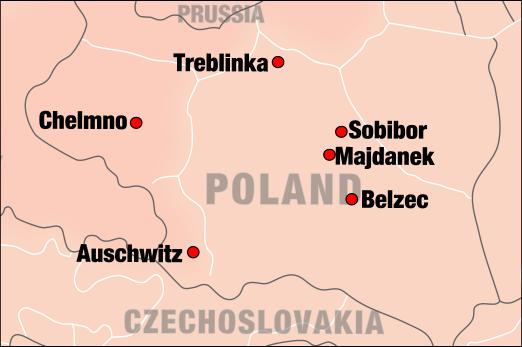[back] Holocaust revisionism

BELZEC
[back]
Holocaust
revisionism
See: Auschwitz-Birkenau Belsen Buchenwald Dachau Majdanek Sobibor Treblinka US based Camps Allied Camps
http://www.air-photo.com/english/belzec.html
The Alleged Experimental Gassings at Bełżec
Rudolf Reder’s Belzec – a critical reading
Bełżec - The dubious claims of Michael Tregenza
Christopher Browning and the “Nazi Gas Chambers” of Belzec, by Paul Grubach
Bełżec or the Holocaust Controversy of Roberto Muehlenkamp, by Carlo Mattogno
Witnesses
Kurt Gerstein [Treblinka]
Joseph Oberhauser
Rudolph Reder
Hans Frank
Video
12: Belzec Burial Space: It's too small also,
and we use the Rose Bowl Stadium during the Rose Bowl Game to show that. Watch
episode 11 first or this chapter won't make sense.
ONE THIRD OF THE HOLOCAUST
Books
Carlo Mattogno, Belzec in Propaganda,
Testimonies, Archeological Research, and History
Download: PDF: 3 MB
- HTML-ZIP: later |
Buy this item
600,000, if not as many as 3 million Jews, were allegedly murdered in Belzec
camp between Nov. 1941 and Dec. 1942. Various murder weapons are claimed: diesel
gas chambers; quicklime in trains; high voltage; vacuum chambers. According to
witnesses, the corpses were finally incinerated on huge pyres without leaving
any traces... This study exposes the Belzec hoax by thoroughly examining all
available evidence, including forensic drillings and excavations of the late
1990s.
Quotes
Much like Treblinka, the Belzec camp could easily be
looked into from the nearby rail line and road. The town of
Belzec was located about 1 mile north of the camp....The
Majdanek camp is located at the outskirts of the city of
Lublin. Just as for Treblinka, the surrounding fields were
cultivated right up to the camp boundary. The alleged gas
chambers and the crematorium were outside the camp proper,
openly visible and accessible to thousands of people living
in the suburbs of Lublin. AIR PHOTO
EVIDENCE by JOHN CLIVE BALL
All photographs of heaps of corpses were taken in Western camps around the end of the war, such as Dachau, Bergen-Belsen, and Buchenwald, where historians now agree no mass murders took place. Significantly, there are no such photographs taken at the camps in which mass murder is alleged to have occurred (Auschwitz, Treblinka, Belzec, Sobibor, Chelmno, Majdanek.) These eastern camps were all in areas which came under Soviet control at war's end. It is very telling that the Soviets released no pictures of mass graves or heaps of corpses and allowed no journalists, medical professionals, or other experts to examine the camps. Since the end of the 1980s. FAQ about Revisionism by Germar Rudolf
Sobibor, Belzec, Majdanek. As in the case of Treblinka, it would have been impossible in Majdanek or Belzec to keep any mass murder secret; the close proximity of settlements and roads, and the cultivation of surrounding farm land right up to the camp fences, saw to that. In no case is there any evidence for mass graves or burning pits. Babi Yar The ravine of Babi Yar underwent no noticeable changes in topography or vegetation up to the end of the War. There are no signs of human intervention during the time of German occupation. There was no human activity there at the time of the mass cremations attested to by the witnesses. AIR PHOTO EVIDENCE by JOHN CLIVE BALL
Odilo Globocnik (b. 1904) was the SS and Police Leader of
the Lublin District of the General Government and responsible for the
construction of the alleged “pure extermination camps” Belzec, Sobibor,
and Treblinka. According to most accounts, Globocnik allegedly poisoned himself
with a cyanide capsule just after being captured by British troops in Austria on
May 31, 1945. Other sources claim he was killed by partisans or Jewish
“avengers” in May or June 1945.
Kurt Gerstein (b. 1905) was an engineer and SS hygiene
technician who in Allied captivity after the war claimed to have visited Belzec
and to there have witnessed a gassing of Jews. He wrote a number of “reports”
concerning the alleged visit, which were later presented as “undisputable proof”
of homicidal gas chambers. On July 25, 1945, soon after the French started
interrogating him, Gerstein was found hanged in his cell. Gerstein’s widow was
not informed about her husband’s death until June 1948 (cf. Henri Roques, The
“Confessions of Kurt Gerstein”). A Brief List of the
Conveniently Deceased by Thomas Kues